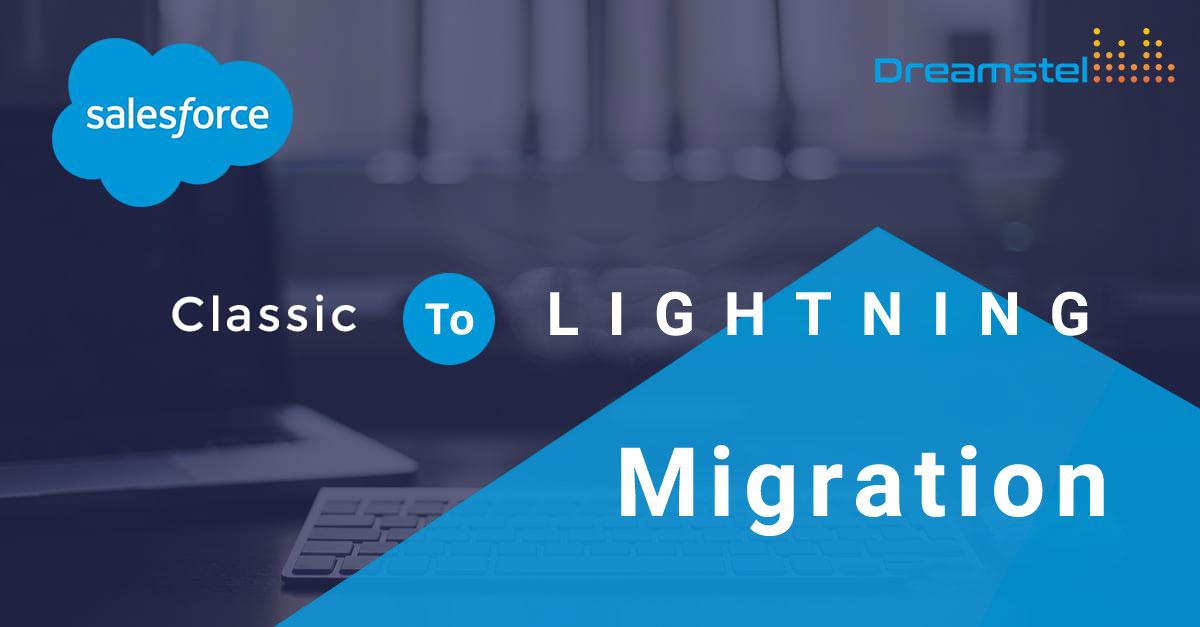 +1-302-213-1128
+1-302-213-1128
 +61 284 880 972
+61 284 880 972
 +91-120-4399820
+91-120-4399820
 +1-302-213-1128
+1-302-213-1128
 +61 284 880 972
+61 284 880 972
 +91-120-4399820
+91-120-4399820
This very spirit of innovation compelled Salesforce launched its signature CRM in a new and improved avatar called Salesforce Lightning, but it proved to be a futile exercise and did not work as expected. Salesforce Lightning Experience (LEX) is the future and it cannot be avoided. It’s just a matter of time when you opt for Salesforce lightning migration. If you want better responsiveness and a more flexible UX, consider a Salesforce classic to Lightning migration. Salesforce has made it very clear that it is going to release new updates for LEX.
The transition can end up being a time-taking and effort-intensive process depending upon the size and culture of your company. All the stakeholders have to make some big adjustments that would require multiple sessions of user training and significant change management efforts. Migration from Salesforce Classic to Lightning is an expensive exercise but better than the cost of a failed migration. To successfully migrate, you need to plan ahead and follow the best practices.
There are 4 steps for a successful migration from Salesforce classic to Lightning. As per the complete Salesforce Lightning Migration strategy, by investing in the right research, planning, testing and training it is possible to ensure a smooth migration to the LEX. To maximize Salesforce adoption in your company, Salesforce Lightning migration guide is available to get you started on this journey. You can easily and freely adapt these migration steps from Salesforce classic to Lightning as per your organization’s needs.

Before migrating to Lightning you would want to know whether it would suit your organization or not. Ask yourself a few questions:
You can run Salesforce’s in-built Lightning Experience readiness. Check to better evaluate if LEX meets your organization’s specific needs. It will help you to understand the features and customization that you are using in Salesforce Classic. It can help you map compatibility and code issues, what issues need to be fixed before choosing to migrate from Salesforce Classic to Lightning. You need to present a strong business case for LEX in order to convince the leadership. Demonstrate the top brass what real value it can deliver.
Another important step is planning for the migration. Your migration plan must have timelines, outlining of responsibilities and milestones. Here are the basic steps in planning for migration to Salesforce LEX:
Take stock of all the functions that use Salesforce such as sales, operations, backoffice, customer service and marketing. Identify which one of them would be easiest to migrate.
You need be proactive in training salespersons to use Salesforce LEX by fleshing out 360 degree training approach that covers different training tactics, timelines and tools. Here are the few challenges that you will need to overcome through training. You can either adopt or implement the most important training elements i.e. traditional training techniques, informal training, on-demand learning, etc. Allows users to practice using the CRM in live environment, with contextual, automated and bite-sized lessons.
You can work with the Salesforce migration taskforce to identify a group of super users who are truly passionate about the Salesforce tool and give them early opportunities to train on the new technology. You can train them as the agents of change.
You need to check the adoption and migration goals you set at the beginning of this guide. Salesforce has a ‘switch to classic’ button to allow users to move between two versions until they get comfortable with Lightning. The one important thing is to keep and sustain training efforts and keep the accountability of Salesforce alive. Salesforce Lightning migration experts are available to guide you through your whole journey.
Leave a Message
Recent Blogs
-December 10, 2021: Learn About Package Development Salesforce
-November 26, 2021: The Power of IT Solutions for the Retail Industry
-November 11, 2021: Wide Spectrum of Salesforce Application Development Services
-November 02, 2021: Why Should You Use The Package Development Model In Salesforce?
-November 01, 2021: All You Need To Know About Integrating Tableau Into Salesforce
View More Blogs...